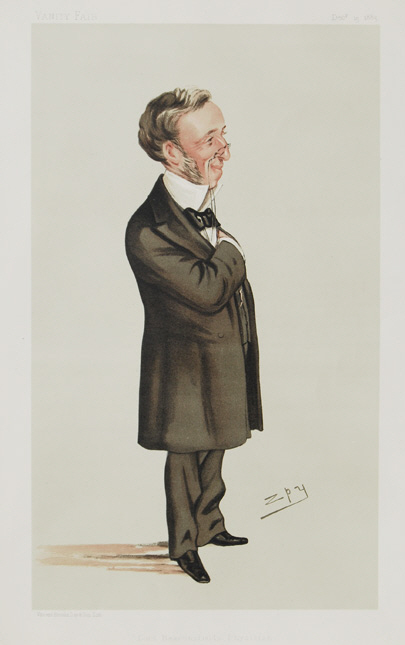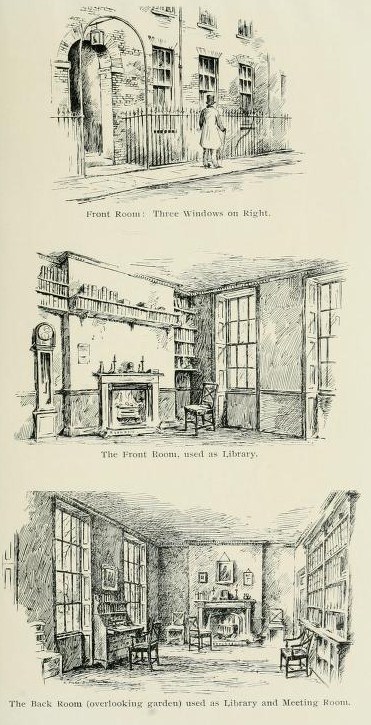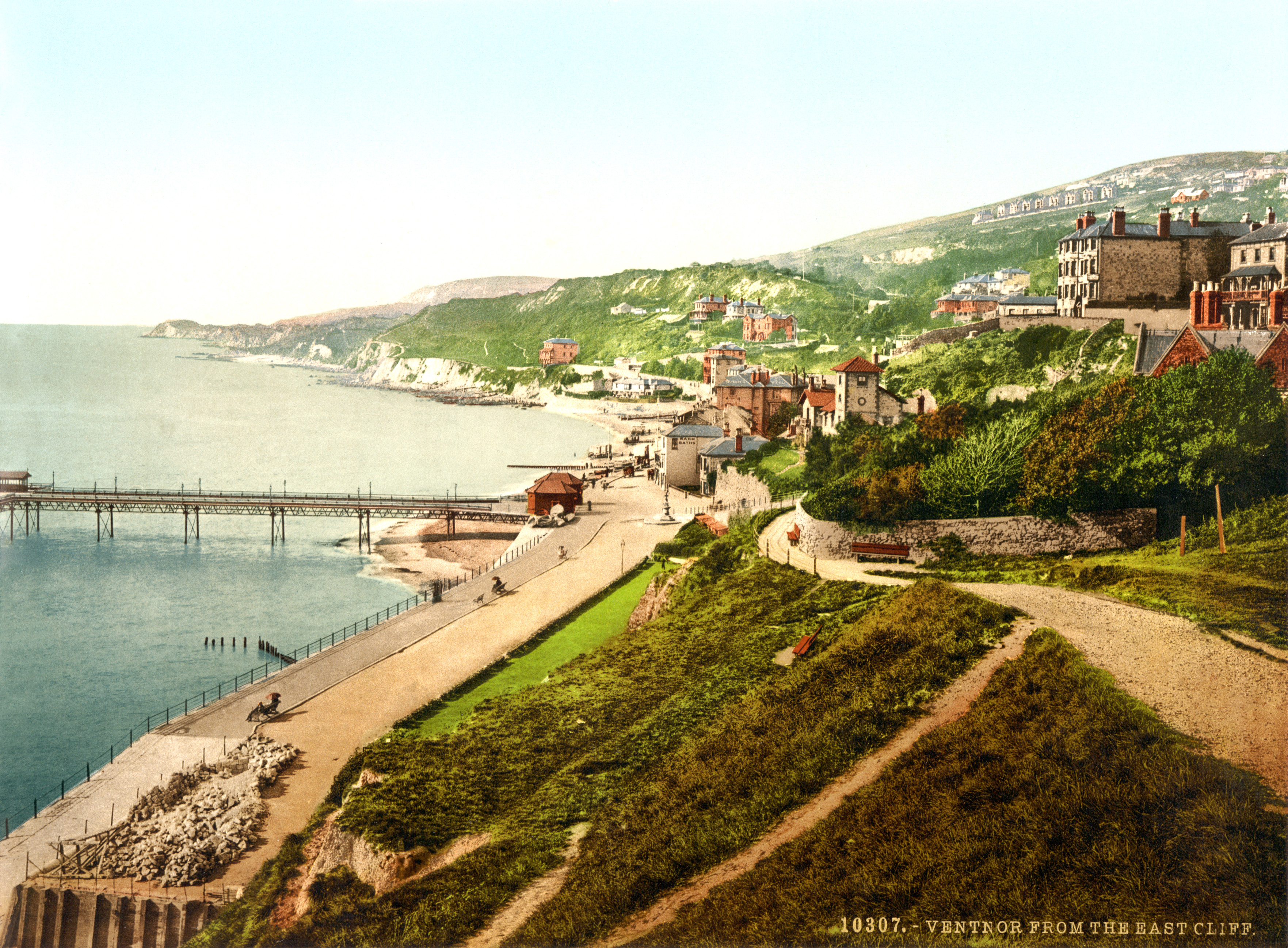|
Richard Quain (Irish Physician)
Sir Richard Quain, 1st Baronet, (30 October 1816 – 13 March 1898) was an Irish people, Irish physician. Life He was born at Mallow, County Cork, Mallow-on-the-Blackwater, County Cork, and died in Harley Street, London. Quain was the eldest child of John Quain of Carraig Dhúin (Carrigoon), Cork (city), Cork and Mary, daughter of Michael Burke of Mallow, County Cork, Mallow, Cork. He was sent to the Diocesan School at Cloyne for his early education and then, aged 15, apprenticed to the surgeon-apothecary Fraser in Limerick for five years. In 1837 he enrolled in medicine at the University College London, where his cousins, Jones Quain (1796–1865), the anatomist, and Richard Quain, FRCS, held teaching posts. He graduated M.B. with honours in 1840. Family He was a cousin of Jones Quain (1796–1865), the author of ''Quain's Elements of Anatomy'' and of Richard Quain (surgeon), Richard Quain, who was president of the Royal College of Surgeons of London, Royal College of Surgeon ... [...More Info...] [...Related Items...] OR: [Wikipedia] [Google] [Baidu] |
Mallow, County Cork
Mallow (; ) is a town in County Cork, Ireland, approximately thirty-five kilometres north of Cork. Mallow is in the barony of Fermoy. It is the administrative centre of north County Cork, and the Northern Divisional Offices of Cork County Council are located in the town. Mallow is part of the Cork East Dáil constituency. Name The earliest form of the name is ''Magh nAla'', meaning "plain of the stone". In the anglicisation "Mallow", ''-ow'' originally represented a reduced schwa sound (), which is now however pronounced as a full vowel . In 1975, ''Mala''—a shortening of ''Magh nAla''—was among the first Irish placenames adopted by statute, on the advice of the Placenames branch of the Ordnance Survey of Ireland. In the ''Annals of the Four Masters'', compiled in the 1630s, ''Magh nAla'' is misrepresented as ''Magh Eala'', the Donegal-based authors being insufficiently familiar with Cork places. P.W. Joyce in 1869 surmised that in ''Magh Eala'' , ''Ealla'' referred to ... [...More Info...] [...Related Items...] OR: [Wikipedia] [Google] [Baidu] |
Cloyne
Cloyne () is a small town to the southeast of Midleton in eastern County Cork. It is also a see city of the Anglican (Church of Ireland) Diocese of Cork, Cloyne and Ross, while also giving its name to a Roman Catholic diocese. St Colman's Cathedral in Cloyne is a cathedral church of the Church of Ireland while the Pro Cathedral of the Roman Catholic Diocese of Cloyne, Cobh Cathedral of Saint Colman, overlooks Cork Harbour. Cloyne is within the Cork East Dáil constituency. History The first evidence of settlement in Cloyne is a 4000-year-old portal dolmen that lies to the West of the town. The bishopric of Cloyne was founded by St. Colman Mac Léníne, (530–606 A.D.) as his principal monastery in the sixth century. The origin legend '' Conall Corc and the Corco Loígde'' claims that the land for the foundation of the monastery was not given by the local king, but by Coirpre mac Crimthainn (d. ''c''. 580 A.D.), who was king of Munster from the Eóganacht Glendamnach: :Co ... [...More Info...] [...Related Items...] OR: [Wikipedia] [Google] [Baidu] |
Harveian Society Of London
The Harveian Society of London, named after the physician William Harvey, is a medical society and registered charity, founded in 1831. Doctors assemble regularly at the Medical Society of London, Chandos Street, Cavendish Square to converse and discuss medical matters through the medium of lectures and conferences. The society's council rotate annually and comprises the president, two vice-presidents, the treasurer, the executive and two honorary secretaries, the archivist and nine councillors. Origins John Coakley Lettsom, had opened a dispensary in London in 1770, following which, in 1773, he founded the Medical Society of London. Over the next 50 years, the expansion of dispensaries, particularly around Marylebone, created a platform for a group of doctors to get together and create The West London Medical Society, the intention of which was to cultivate a medium to better their knowledge and advance medical science. By October 1831, the society's name had changed to 'The Har ... [...More Info...] [...Related Items...] OR: [Wikipedia] [Google] [Baidu] |
Medical Society Of London
The Medical Society of London is one of the oldest surviving medical societies (being organisations of voluntary association, rather than regulation or training) in the United Kingdom. It was founded in 1773 by the Quaker physician and philanthropist Dr John Coakley Lettsome for physicians, surgeons and apothecaries who met to exchange medical news and confer about difficult cases. Lettsome himself served as president of the new society in 1775–1776, 1784–1785, 1809–1811 and 1813–1815. James Sims was president from 1786 to 1808 and during his long term of office some members of the society, led by Sir William Saunders, became so offended by his autocratic style that in 1805 they formed themselves into a new medical society, the Medical and Chirurgical Society of London, which later evolved into the Royal Society of Medicine. The Society's wide appeal, the possession of a valuable library (originally purchased from Sims) and freehold property (donated by Lettsome) has help ... [...More Info...] [...Related Items...] OR: [Wikipedia] [Google] [Baidu] |
Royal Medical And Chirurgical Society
The Medical and Chirurgical Society of London was a learned society of physicians and surgeons which was founded in 1805 by 26 personalities in these fields who had left the Medical Society of London (founded 1773) because of disagreement with the autocratic style of its president, James Sims. Among its founders there were William Saunders (1743–1817), its first president; John Yelloly (1774–1842), Sir Astley Cooper (1768–1841), the first treasurer; Alexander Marcet (1770–1822) and Peter Mark Roget (1779–1869). According to its charter, the Medical and Chirurgical Society of London was founded "for the purpose of conversation on professional subjects, for the reception of communications and for the formation of a library" and served "several branches of the medical profession". In 1834 the Society received a Royal charter, thus becoming the Royal Medical and Chirurgical Society of London. This society merged with several other specialist societies, from 1907 to 1909, ... [...More Info...] [...Related Items...] OR: [Wikipedia] [Google] [Baidu] |
Pathological Society Of London
The Pathological Society of London was founded in 1846 for the "cultivation and promotion of Pathology by the exhibition and description of specimens, drawings, microscopic preparations, casts or models of morbid parts." Its first meeting was held in February 1847 at which C. J. B. Williams was elected as the society's first president and 106 members enrolled. Early members included Richard Bright, Golding Bird, William Gull, William Jenner, Henry Bence Jones and Richard Quain. The society published 58 volumes of the '' Transactions of the Pathological Society of London''. In 1907 it was merged with the Royal Medical and Chirurgical Society of London and other societies to become the Royal Society of Medicine The Royal Society of Medicine (RSM) is a medical society in the United Kingdom, headquartered in London. History The Society was established in 1805 as Medical and Chirurgical Society of London, meeting in two rooms in barristers’ chambers .... Presidents Re ... [...More Info...] [...Related Items...] OR: [Wikipedia] [Google] [Baidu] |
George Viner Ellis
George Viner Ellis FRS (25 September 1812 Minsterworth - 25 April 1900 Minsterworth) was Professor of Anatomy at University College London and one of the foremost anatomists of his time. George Viner was the second son of Viner Ellis of Duni House, Minsterworth, near Gloucester, his family having been landowners in the area for many years. His education was at the Crypt Grammar School from where he went to the Cathedral Grammar School, and later was apprenticed to a Dr Buchanan of Gloucester. His uncle, Daniel Ellis, a member of the Royal Society Edinburgh, suggested that he enrol as a medical student at the newly founded University College London. In his vacations he studied in Paris and attended lectures and worked at anatomy in Berlin. Ellis was Demonstrator of Anatomy under Professor Richard Quain, and succeeded him in the Chair of Anatomy in 1850, retiring as Emeritus Professor in 1877, but always aloof from the professional world. He was succeeded by Sir George Dancer Than ... [...More Info...] [...Related Items...] OR: [Wikipedia] [Google] [Baidu] |
Anatomy
Anatomy () is the branch of biology concerned with the study of the structure of organisms and their parts. Anatomy is a branch of natural science that deals with the structural organization of living things. It is an old science, having its beginnings in prehistoric times. Anatomy is inherently tied to developmental biology, embryology, comparative anatomy, evolutionary biology, and phylogeny, as these are the processes by which anatomy is generated, both over immediate and long-term timescales. Anatomy and physiology, which study the structure and function (biology), function of organisms and their parts respectively, make a natural pair of related disciplines, and are often studied together. Human anatomy is one of the essential basic research, basic sciences that are applied in medicine. The discipline of anatomy is divided into macroscopic scale, macroscopic and microscopic scale, microscopic. Gross anatomy, Macroscopic anatomy, or gross anatomy, is the examination of an ... [...More Info...] [...Related Items...] OR: [Wikipedia] [Google] [Baidu] |
Royal College Of Physicians
The Royal College of Physicians (RCP) is a British professional membership body dedicated to improving the practice of medicine, chiefly through the accreditation of physicians by examination. Founded by royal charter from King Henry VIII in 1518, the RCP is the oldest medical college in England. It set the first international standard in the classification of diseases, and its library contains medical texts of great historical interest. The college is sometimes referred to as the Royal College of Physicians of London to differentiate it from other similarly named bodies. The RCP drives improvements in health and healthcare through advocacy, education and research. Its 40,000 members work in hospitals and communities across over 30 medical specialties with around a fifth based in over 80 countries worldwide. The college hosts six training faculties: the Faculty of Forensic and Legal Medicine, the Faculty for Pharmaceutical Medicine, the Faculty of Occupational Medicine the Fac ... [...More Info...] [...Related Items...] OR: [Wikipedia] [Google] [Baidu] |
Ventnor
Ventnor () is a seaside resort and civil parish established in the Victorian era on the southeast coast of the Isle of Wight, England, from Newport. It is situated south of St Boniface Down, and built on steep slopes leading down to the sea. The higher part is referred to as Upper Ventnor (officially Lowtherville); the lower part, where most amenities are located, is known as Ventnor. Ventnor is sometimes taken to include the nearby and older settlements of St Lawrence and Bonchurch, which are covered by its town council. The population of the parish in 2016 was about 5,800. Ventnor became extremely fashionable as both a health and holiday resort in the late 19th century, described as the 'English Mediterranean' and 'Mayfair by the Sea'. Medical advances during the early twentieth century reduced its role as a health resort and, like other British seaside resorts, its summer holiday trade suffered from the changing nature of travel during the latter part of the century. Its ... [...More Info...] [...Related Items...] OR: [Wikipedia] [Google] [Baidu] |
Greenwich
Greenwich ( , ,) is a town in south-east London, England, within the ceremonial county of Greater London. It is situated east-southeast of Charing Cross. Greenwich is notable for its maritime history and for giving its name to the Greenwich Meridian (0° longitude) and Greenwich Mean Time. The town became the site of a royal palace, the Palace of Placentia from the 15th century, and was the birthplace of many Tudors, including Henry VIII and Elizabeth I. The palace fell into disrepair during the English Civil War and was demolished to be replaced by the Royal Naval Hospital for Sailors, designed by Sir Christopher Wren and his assistant Nicholas Hawksmoor. These buildings became the Royal Naval College in 1873, and they remained a military education establishment until 1998 when they passed into the hands of the Greenwich Foundation. The historic rooms within these buildings remain open to the public; other buildings are used by University of Greenwich and Trinity Laban C ... [...More Info...] [...Related Items...] OR: [Wikipedia] [Google] [Baidu] |
Charles James Blasius Williams
Charles James Blasius Williams (3 February 1805 – 24 March 1889) was an English physician. He was an early adopter of new techniques of physical examination, and became known as a specialist in diseases of the chest. Life He was the eighth child of the Rev. David Williams (1751–1836), born in the Hungerford almshouse in Wiltshire; his father, an uncle of John Williams (1792–1858) the archdeacon of Cardigan, was warden of the almshouse and curate of Heytesbury. His mother, whose maiden name was also Williams, was daughter of a surgeon in Chepstow, Monmouthshire. His father was a successful private tutor, and educated him at home; he entered the University of Edinburgh in 1820. He was there a resident pupil of Dr. John Thomson (1765–1846), and was influenced in his reading by Dr. Robert Herbert Brabant of Devizes, then living in Edinburgh. His inaugural dissertation for the degree of M.D., which he took in 1824, was ''On the Blood and its Changes by Respiration and Secreti ... [...More Info...] [...Related Items...] OR: [Wikipedia] [Google] [Baidu] |









